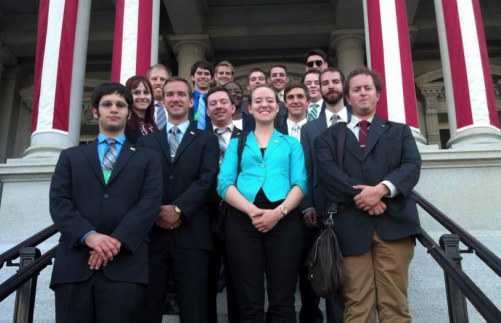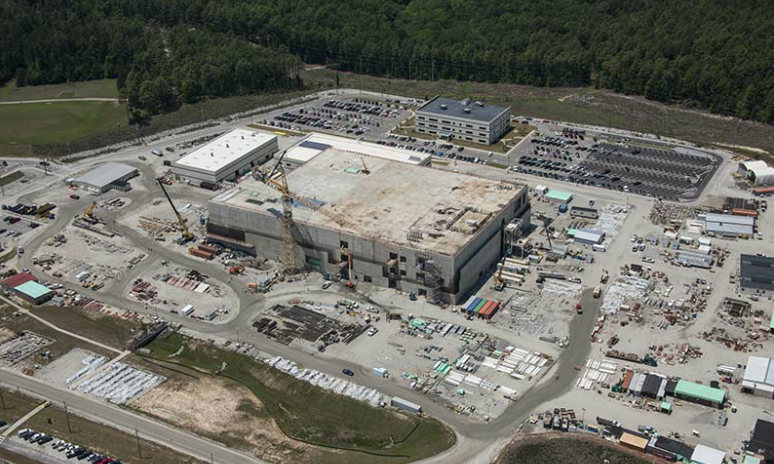Earlier this month, the Nuclear Engineering Student Delegation (NESD) met in the U.S. Capitol to advocate for nuclear science and engineering. The NESD is a student run and selected organization that brings nuclear engineering students to Washington, D.C. to meet with policymakers and others who influence policy. Typically, the NESD focuses on advocating for nuclear engineering education and research funding. This year, the NESD also advocated for an interim storage facility for spent nuclear fuel, reauthorization of the Export-Import Bank, and funding for Small Modular Reactors.
The week starts out with all the Delegates writing a Policy Statement, which is distributed in the meetings throughout the week. Each year, the delegation includes students from all parts of nuclear science and engineering. This year, Delegates have backgrounds including reactor engineering, radiation detection, nuclear security and nonproliferation, medical physics, and nuclear fuel cycle.
Some of the high profile meetings included Assistant Secretary of Nuclear Energy Dr. Peter Lyons at the Department of Energy and Commissioner William Magwood of the Nuclear Regulatory Commission. The NESD also met with the Office of Science and Technology Policy and the Environmental Protection Agency (EPA), which regulates radiation and is currently working on new regulations on carbon emissions from power plants. To cap the week off, the Delegates met with their Senators and Representatives and over 150 other Congressional offices.
If you are interested in learning more about the program you can visit the NESD website (www.nesd.org), email this year’s Chair, Nicholas Thompson, or next year’s Chair, Lane Carasik. Below is the list of this year’s Delegates, more information about their backgrounds can be found here. Applications open for next year’s Delegation in January.
Nicholas Thompson, Rensselaer Polytechnic Institute (Chair)
Lane Carasik, Texas A&M University (Co-Vice Chair)
Anagha Iyengar, University of Tennessee, Knoxville (Co-Vice Chair)
Daniel Curtis, Massachusetts Institute of Technology
Remy Devoe, University of Tennessee, Knoxville
Matthew Ellis, Massachusetts Institute of Technology
Tom Grimes, Purdue University (Returning Delegate)
Kyle Hartig, Penn State University
Jacob Jurewicz, Massachusetts Institute of Technology
Justin Knowles, University of Tennessee, Knoxville
Taylor Lane, Texas A&M University
Jeremy Pearson, University of California, Irvine (Returning Delegate)
Miriam Rathbun, University of Pittsburgh
Ben Reinke, The Ohio State University (Returning Delegate)
Matthew Riblett, Virginia Commonwealth University
Tracey-Ann Wellington, University of Tennessee, Knoxville
Samantha Winkle, University of Utah





 RSS Feed
RSS Feed

